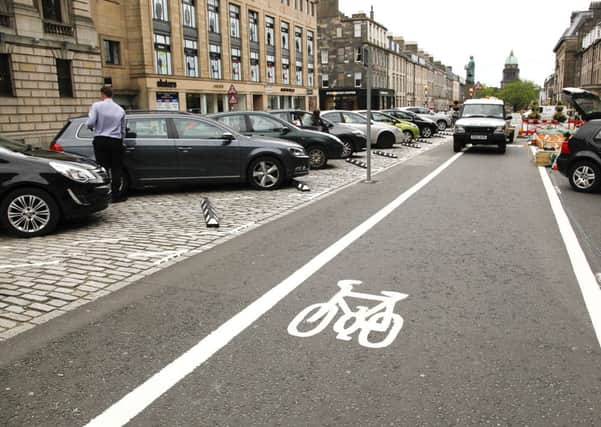Comment: Taking time to pedestrianise Edinburgh


The one-year pilot to part-pedestrianise George Street is now underway – with the aim of creating a space that attracts more people to enjoy our city centre, boosts business and enhances the ambience.
While some initial disruption has been inevitable as work takes place on creating the high-quality environment, the plans for traffic management should see traffic continue to flow as well as normal, especially when motorists become used to the set-up.
Advertisement
Hide AdAdvertisement
Hide AdHowever, it is important to remember the many good reasons that this pilot has been approved by City of Edinburgh Council and why Essential Edinburgh very much supports this. As the Business Improvement District (BID) for the Capital’s city centre, we are charged with representing around 600-levy paying businesses, many of them from retail or hospitality.
During August last year, when a similar project ran for the Festival, we saw some dramatic upturn in the numbers of people coming to the area.
The four weeks saw increases of almost 31 per cent (week commencing 29 July), 34 per cent (w/c 5 August), 34 per cent (w/c 12 August) and almost 30 per cent (w/c 19 August) when compared with the same four weeks of the Fringe in 2012. During the same weeks, the wider city centre figures also recorded increases, although at more modest levels of 18 per cent, 17 per cent, 20 per cent and 17 per cent respectively.
Those increased numbers mean increased opportunities for our retailers and our hospitality sector in the BID area, and a fantastic ambience in addition to that.
The plan maintains essential parking and access for the businesses, while at the same time giving our many excellent hospitality businesses and retailers the opportunity to come out into the street to further enhance the ambience, and in turn this creates new opportunities for them.
And there is significant evidence from around the UK that public realm improvements, in particular pedestrianisation, bring major benefits. In particular, a major study conducted for the charity Living Streets reported:
• Case study evidence suggests that well-planned improvements to these public spaces can boost footfall and trading by up to 40 per cent.
• Investing in better streets and spaces for walking can provide a competitive return compared with other transport projects; walking and cycling projects can increase retail sales by 30 per cent.
Advertisement
Hide AdAdvertisement
Hide Ad• Evaluations of pedestrian improvements in Coventry and Bristol show a 25 per cent increase in footfall on Saturdays and predict £1.4 million benefits respectively.
Significant increases in employment can flow from investment in improved public realm, and the development of pedestrianised shopping areas. In Dublin, the redevelopment of the Temple Bar District led to a 300 per cent increase in employment before the economic boom.
Cultural quarters in Sheffield and Manchester have also seen increases in employment, albeit less dramatic ones.
Although few studies attempt to model the impact on tourism, one such example found that the new North Terrace of Trafalgar Square had a 300 per cent increase in visitors.
The benefits don’t end there, however. There is substantial evidence that improvements to the public realm increase property prices. For example one study in Hong Kong, found a 17 per cent increase in retail rents from pedestrianisation.
Walking projects have also been found to increase land values. A review of earlier literature suggests retail and commercial rates increase in the range of 10-30 per cent.
The extensive research we have carried out with our levy payers has fed back that a big majority want to see our policy of ensuring a Festival hub remains in the city centre maintained or enhanced. The views we receive from our levy payers naturally dictate our policy.
That is what the George Street plan delivers. We think it will bring significant benefits for businesses, residents and visitors. However, the key thing this experiment can do is inform the long-term plans for George Street. Refinements to the initial layout will be forthcoming but hopefully so will some clarity and a unified vision on how the street will look in five to ten years from now.
•Andy Neal is chief executive of Essential Edinburgh www.essentialedinburgh.co.uk